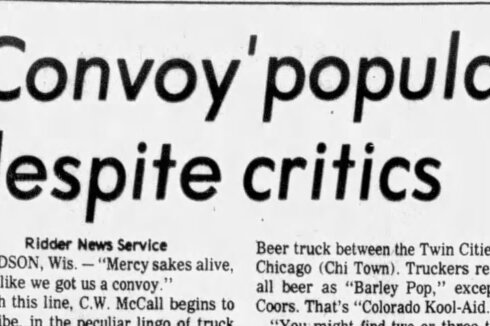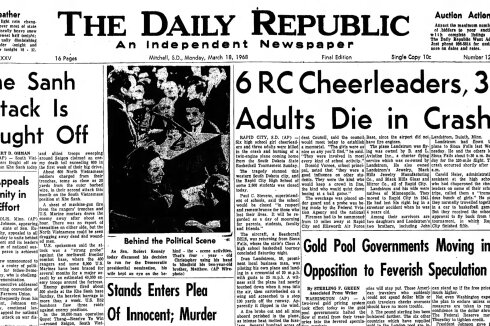ROCK COUNTY, Minn. – Roughly 40 years have gone by, yet investigators are no closer to answers in the brutal slaying of 22-year-old Kelly Robinson, whose body was discovered floating in a pond near a Luverne, Minn. gravel pit.
“I know very few details on the case,” Rock County Sheriff Evan Verbrugge told Forum News Service in a recent statement. “No one in this office was working here when this occurred."
ADVERTISEMENT
The reason Robinson’s case fell to the wayside isn’t entirely clear.
Her case was featured in the 2008 Minnesota Bureau of Criminal Apprehension cold case playing card initiative , and her sister has remained an avid advocate.
Newspaper archives from the years following her death indicate law enforcement homed in on a Sioux Falls man who was already serving a 200-year rape sentence, and was known to be a repeat offender.
The circumstantial evidence seemed to line up.
Robinson disappeared from Sioux Falls just days before she was discovered — and the convicted rapist’s wife told investigators she saw cockleburs, which were prevalent in the area Robinson’s body was found, on his clothes.

Injuries inflicted on Robinson’s head were also consistent with the convicted rapist’s mode of operation — and the man was living in Sioux Falls at the time Robinson went missing, and was killed.
All of this wasn't enough to warrant charges, though. And it seems as though investigators left it at that.
ADVERTISEMENT
“They believe they know who it is but just don’t have the DNA,” Verbrugge told the Argus-Leader in 2007.
The assumption of his guilt isn't enough for Robinson’s family, though.
In a 1997 edition of the Argus Leader, her sister, Kathy Moller, told investigators she ultimately wants the answer to this question: What happened to Robinson?
“All I want is to know what happened, and why it happened,” Moller told the newspaper in 1997. “That could settle this for us finally. Just why. That’s all I want to know.”
When she was found
Robinson was first spotted by a young boy out for a hike with his family on Memorial Day of 1984.
Her body was seen floating in the water, roughly 20 feet from the shore.
The initial autopsy stated Robinson died by drowning, yet also indicated sexual assault could not be confirmed.
ADVERTISEMENT
That changed in the weeks following the discovery of her body, when archived news stories indicate investigators confirmed she was likely physically and sexually assaulted before her death.
New information from the Bureau of Criminal Apprehension states Robinson likely died from asphyxiation.

Foul play has been suspected from the start.
Her shoes were scattered somewhat far away from one another near the shoreline of the pond. Defensive wounds were discovered on her hands — and abrasions were found around her neck.
She had no clothes under her jacket or jeans, according to a 1984 Associated Press story in The Forum.
Initial reports also indicate there was a spot of tall grass that seemed to have been patted down, allegedly an area where an attack could have taken place.
Unanswered questions
A multiple sclerosis diagnosis left Robinson unable to drive — and she had no ties to Luverne, Minn.
ADVERTISEMENT
Her lack of familiarity with the Luverne area cast doubt on the explanation that she simply ran into trouble while on a visit to the small southwestern town.
“I think my sister was murdered,” Moller told the Associated Press in 1984. “I don’t think it was an accident, no I don’t,”

In order to access the pond near the gravel pit, a person would have had to walk through 100 yards of rugged terrain, according to then-Rock County attorney Tim Connell.
“The multiple sclerosis, after getting into the investigation, talking with relatives, talking with friends, it appears very unlikely that she could have walked back there and gone through the type of terrain on her own without help from someone and without maybe even being carried at different points,” Connell told the Associated Press, according to a 1984 edition of The Forum.
At least two witnesses told investigators in the first days of the investigation that they believed they saw Robinson get into a vehicle resembling a Ford Torino outside of the Frontier Bar in Sioux Falls.
Despite the unanswered questions, Robinson’s case has gone cold. Those working in law enforcement in the jurisdiction where she was found no longer know about Robinson’s slaying.
“I might be the only person in this office that even knows the name,” Verbrugge told Forum News Service.
ADVERTISEMENT
If you have any information about Robinson’s case, contact the Minnesota BCA Tip Line at 877-996- 6222.









